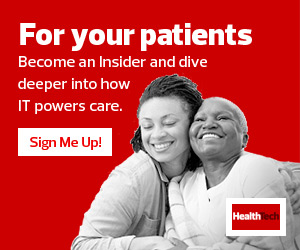Screening for SDOH Helps Maternity Patients and Providers Alike
Numerous health concerns can arise during a pregnancy and the postpartum period, including gestational diabetes and increased strain on essential body systems. Eating well, remaining as active as possible and getting adequate healthcare are all things that can increase the likelihood of a healthy pregnancy. These are also all social determinants of health.
Analyzing SDOH within a community can improve the health of the people who live there. Communities that lack access to grocery stores where people can buy fruits, vegetables, lean proteins and other healthy foods are called food deserts. Likewise, they’re called maternity care deserts if they lack facilities where people can seek specified help.
Screening patients for SDOH such as these allows healthcare organizations and other community partners to build programs to better serve the people who live there. Across the country, states are using Medicaid 1115 demonstration waivers to do just that. For example, managed care organizations in North Carolina are required to connect Medicaid recipients with programs to assist with housing, food security and other SDOH. Other states are using the waiver program to address substance abuse, maternal care and more.
EXPLORE: How healthcare can move the needle on SDOH data.
Collecting SDOH Data to Improve Maternal Health Outcomes
Pervasive disparities exist in the U.S. healthcare system, the result of a long history of medical abuse of marginalized people. There's a lot of mistrust that providers need to address in these communities, and this is a SDOH that providers can take note of during patient visits.
Medical records include geographic data and supplemental ICD-10 SDOH diagnosis codes for documentation. There are codes for everything from domestic violence to a lack of housing and food insecurity. But providers don’t always use SDOH screening tools as frequently as they should. It may be uncomfortable to ask patients about these things, but the issues patients are experiencing can put their overall health at risk.
Many providers also struggle to take the next step after collecting this data: What are they supposed to do with it? Ideally, providers should be able to counsel patients and connect them with programs and other support services to address the SDOH that puts them at risk.
Improving SDOH Screening for At-Risk Patients
To really improve health outcomes and address SDOH, our healthcare system needs to improve the way it screens for risk factors. Removing stigma and utilizing technology can prioritize SDOH screening.
Questions about interpersonal safety and other sensitive issues can be uncomfortable to ask and answer, so we have to find ways to make it less so — namely, by removing the associated stigma. Working in patient care, you have to humanize and empathize with patients to create an atmosphere where they feel safe enough to share with you.
Health technology companies such as Lucina Analytics collect a tremendous amount of data in an effort to improve maternal health outcomes with SDOH data analysis. Such data can help providers guide patients through a healthy pregnancy and delivery instead of costly adverse outcomes and sickness.











